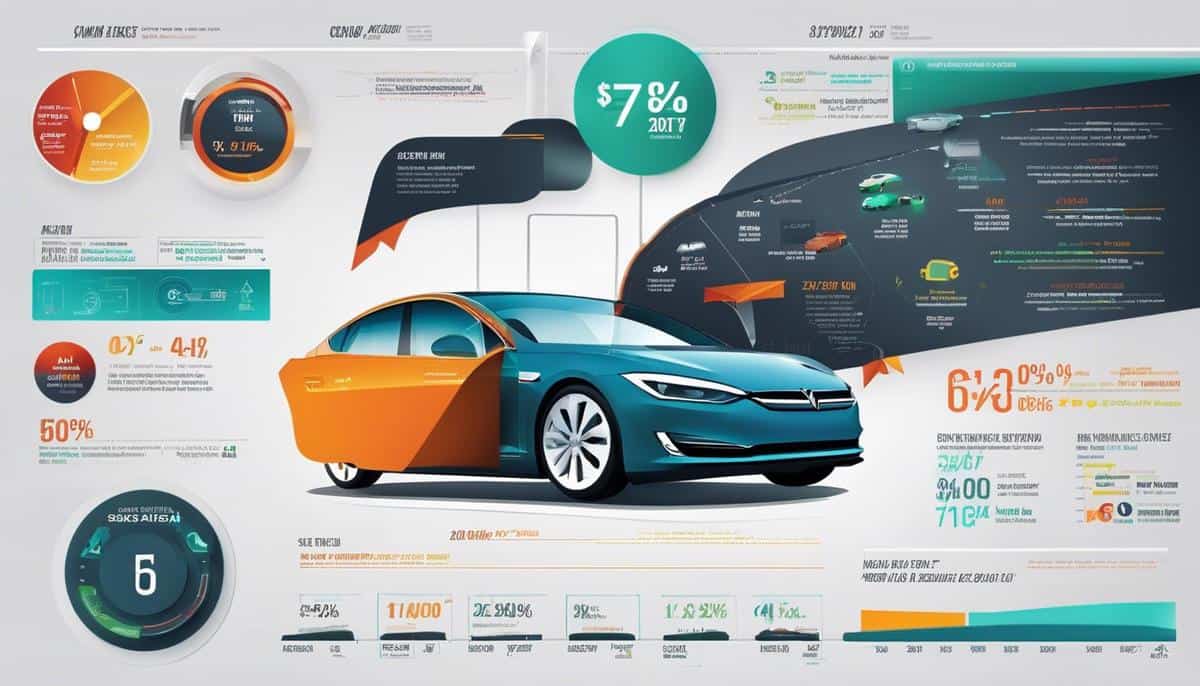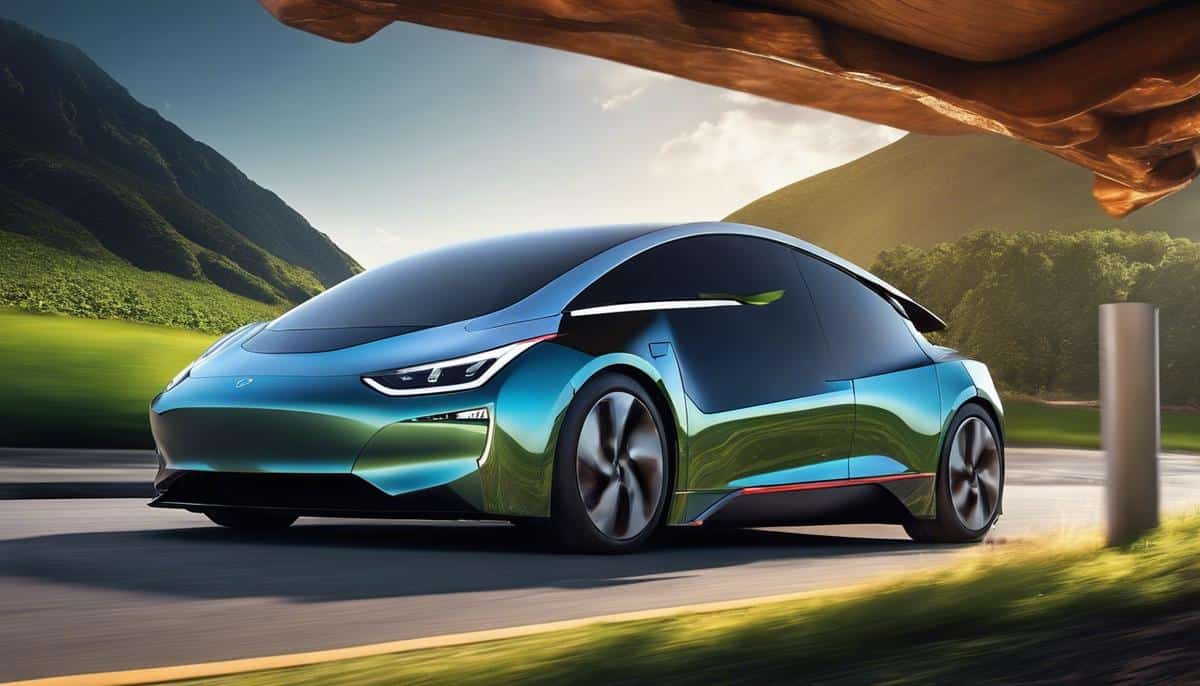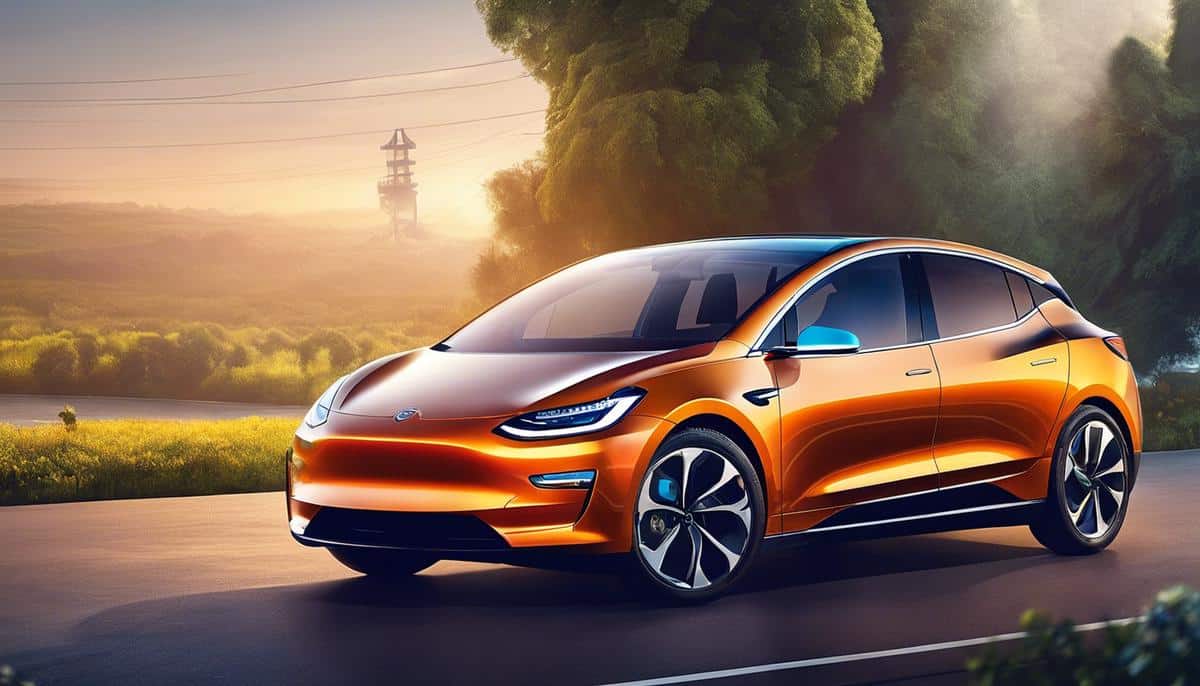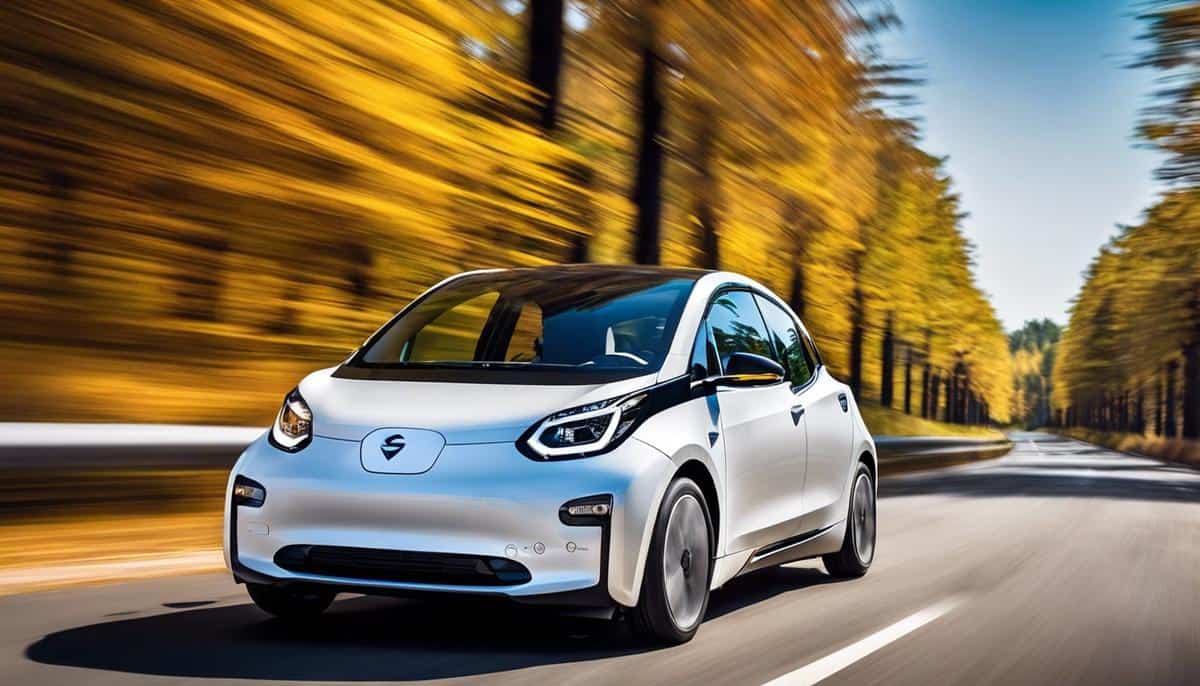
20 Nov Navigating Car Insurance for Electric Vehicles: A Business Perspective
The prospect of a world dominated by electric vehicles (EVs) is no longer a distant fantasy but a rapidly approaching reality. Accelerated by technological advancements and shifting consumer demands, the automotive industry is now on the precipice of a major paradigm shift. Electric vehicles stand at the core of this transformation – they are not merely changing the way we drive; they are reshaping the entire automotive ecosystem, including car insurance. The insurance industry, hitherto almost inseparable from traditional gas guzzling cars, must consequently evolve and adapt to the unique nuances of insuring electric vehicles. These include considering the high upfront costs of these vehicles, their specific maintenance needs, cutting-edge technology, as well as the regulations and incentives governing their use and insurance.
Economic evolution of the electric car market
The Electric Vehicle Wave: A Tectonic Shift in the Global Economy
As the world pivots towards environmentally sustainable models, the electric vehicle (EV) marketplace is witnessing a marked upsurge in popularity. This dramatic shift from gasoline to electricity is causing ripples through the global economy, sparking dramatic transformations in varied industries.
Not just a revolution in terms of environmentally-conscious transport, the burgeoning EV market is catalyzing a profound structural change within the auto industry itself. Pioneers like Tesla are reshaping the landscape with their disruptive models, forcing traditional auto giants to rethink strategies and embrace electric mobility. Resultantly, this competition is stimulating massive investments in EV production, charging infrastructure, and battery technology.
The spillover effects reach beyond the auto sector. The surge in EV industry has ignited a simultaneous explosion in the demand for lithium, cobalt, and nickel, the critical components of EV batteries. This surge is revitalizing the mining industry, inciting a race to secure consistent supplies.
Moreover, the rise of EVs has generated a significant shift in oil demand projections. With progressive electrification, we witness a perceptible dent in the global oil demand, leading to potential destabilization in countries heavily dependent on oil revenues. As oil loses its pivotal role, renewable energy sources are seeing an uplift, infusing fresh vitality into the green energy industry.
In parallel, the infrastructural needs of the EV boom are revolutionizing the real estate sector. The demand for charging stations has prompted innovative use of public and private spaces, creating new revenue streams for property owners and local authorities.
The electric vehicle market growth is also ushering in opportunities for digital innovation. Advanced software capabilities are in high demand to improve efficiency and performance of EVs, enabling a lucrative intersection between the tech and automobile sectors.
While the short-term economic shift is palpable and dramatic, the long-term ripple effects of the EV surge could be even more profound. The auto industry’s transformation may set off a domino effect, impacting sectors like insurance, logistics, and even the advertising industry. The need for EV-specialized technicians stimulates opportunities for vocational training and education, which in turn impacts labor markets and workforce development.
Digesting this dynamic situation, savvy investors and forward-looking entrepreneurs anticipate a golden opportunity. Each facet of this transformation is a potential market ripe for disruption, innovation, and lucrative investment.
Thus, the wave of electric vehicles isn’t a mere shift from petrol pumps to charging stations. It’s a monumental economic quake, realigning multiple sectors, shaking up markets, and opening up vistas of opportunity for the perceptive and agile. As budding entrepreneurs and seasoned investors navigate this intriguing new landscape, one thing is undeniable – the rise of electric vehicles is a game-changer for the global economy.

The nature of car insurance for electric vehicles
The Electric Vehicle (EV) revolution continues to accelerate, and its ripple effects are being felt across multiple sectors. One such sector grappling with the implications of this shift is the car insurance industry. As consumer appetite leans heavily towards eco-friendly transportation options, the insurance sector must adapt its traditional schemes and policies to cater to the new and distinctive needs presented by EVs.
Car insurance for conventional vehicles has long been established, with decades of data, incidents, and consumer behavior at hand to guide insurers in their risk assessment and premium calculations. However, there is a significant difference when it comes to insuring electric vehicles. The novelty of electric cars, the high cost of repair, and the unpredictability of battery lifespan are few of many variables that insurers must consider while formulating their insurance premiums.
Electric vehicles are laden with cutting-edge technology. The incorporation of advanced features such as automated braking systems, collision warnings, and adaptive cruise controls enhance vehicle safety, thereby potentially reducing accident rates. Insurance companies today are gauging the impact of these safety features on risk factor— a development which may translate to lower insurance charges for owners of these high-tech green vehicles.
However, the overlying concern for insurers remains – the high cost of repair or replacement for electric cars. Electric vehicles are essentially computers on wheels, outfitted with expensive lithium-ion batteries and complex electrical systems. As such, repairs or replacements often come with a hefty price tag. This factor, coupled with the limited number of specialist repair centers and technicians trained in electric vehicle maintenance, inflate the repair cost, thereby leading insurers to consider charging higher premiums for EVs than their petrol or diesel counterparts.
There are also unique risks associated with EVs such as those concerning the batteries. As an integral part of an EV’s makeup, battery damage or degradation can lead to substantial costs. Plus, the risk of EV-specific scenarios, such as damage caused to charging equipment or from overcharging, pose additional potential liabilities that require coverage.
Yet, insurance companies recognize the positive impact of EVs on the environment, and many may offer ‘green discounts’ to incentivize the shift towards clean energy transportation. These climate-conscious initiatives work alongside the regulatory support from governments, like tax deductions and incentives for EV owners, fostering an environment that promotes the adoption of electric vehicles.
Continual advancements in technology, battery life, and EV infrastructure, coupled with increased data regarding the actual risk and cost of insuring EVs, will unravel further shifts in insurance policies in the future. The emergence of telematics, usage-based insurance, and the prospect of autonomous vehicles represent additional factors insurers will be grappling with as they navigate the electrified future of transportation.
In this fast-evolving landscape, it is imperative for insurance companies, vehicle manufacturers, and relevant stakeholders to stay adaptive and innovative. A collaborative rather than cutthroat approach may best respond to these new dynamics – in the name of a greener, cleaner, and more sustainable future.

The role of technology
Driving into the Future: How Technological Advancements are Reshaping Insurance for Electric Vehicles
As the electrifying revolution sparks a comprehensive transformation in the auto industry, some of the most significant changes are seen within the framework of the insurance industry. From the intricacies of underwriting to the complexity of risk assessment, the advancement of electric vehicle (EV) technology is reshaping traditional insurance protocols.
When contemplating how insurance for EVs has been influenced by technological advancements, it’s vital to assess how insurers are grappling with the innovative features inherent in these vehicles. Autonomous driving technology, for example, presents both alluring opportunities and puzzling challenges for the insurance industry. With the machine learning capabilities, advanced driver assistance systems (ADAS), deeply integrated into EVs, the probability of accidents declines. While this reduction may translate to lowered insurance premiums, insurers also need to evaluate the high costs associated with repairing these sophisticated systems, hence driving up coverage prices.
Moreover, the shift to electric power has presented unique potential risks that insurers must take into account. The high voltage systems, which include the batteries and related subsystems, imply additional, unique hazards. Specialized staff, tools, and facilities are needed for their repair, thus increasing the insurance premiums due to high costs related to repair or replacement.
Technological advancements have also introduced the concept of telematics – a game-changer for auto insurers. This system enables insurance companies to monitor driving habits, paving the way for a shift from traditional to usage-based insurance (UBI). In an era where EVs are becoming increasingly connected, the use of telematics is the industry’s most prominent example of adopting innovation to meet evolving business needs.
Moreover, the revolution in EV technology has elicited the formulation of incentive-based insurance products. Green discounts, perks for low mileage and residential charging, and deductions for autonomous driving are designed to expedite the assimilation of EVs into our transportation frameworks.
Insurance companies are being pushed more than ever to adapt and evolve, encouraged to wean away from conventional norms. But with comprehensive understanding, informed refinement, and strategic reinvention, insurance for EVs is being shaped to cater to an electrified future.
Shifting gears and driving into the future implies learning and mastering the mechanics of a new vehicle, and the same applies for the insurance industry. Insurers will need to adapt to emerging complexities by developing models that incorporate the evolving risks and benefits of the technology shaping the new age of transportation.
In conclusion, the dynamic scope of the electric vehicle revolution serves as a testament to our unrelenting drive for innovation and progress. The intertwining of this technological evolution with the insurance industry highlights not just adaptability, but also the entrepreneurial ethos of advancing alongside innovation, shifting gears to the rhythm of a changing world. Embracing this newfound momentum, the insurance industry is imbued with countless opportunities to grow, prosper, and navigate the exhilarating world of electric vehicles.

Regulatory impact
Navigating the Electric Vehicle Insurance Marketplace: Untangling the Impact of Government Policies
The global push toward electric vehicles (EVs) isn’t just shaking up the auto industry; it’s causing a seismic shift in the car insurance marketplace. Where government policy fits into this drastic evolution is a complex web that requires an astute entrepreneurial perspective to untangle. This analysis digs into the fundamentals of how government regulations and initiatives are transforming the insurance landscape for electric vehicles.
Government policy holds a profound influence on the trajectory of the electric vehicle industry, which in turn disrupts the traditional car insurance landscape. A variety of federal policies have been implemented around the world aimed at reducing the economic and environmental costs of transportation. For instance, in the US, policies such as the federal tax credit for electric vehicles have resulted in a surge in electric vehicle adoption.
Simultaneously, many governments have initiated strict emission regulations, compelling automakers to prioritize EVs. Increased EV production ultimately leads to an increased need for EV-specific insurance solutions. In response, insurance companies are developing novel policies and innovative insurance products that are designed to cater to the unique risk profile of electric vehicles.
Another aspect of the government’s role in the electric vehicle revolution is the enforcement of stringent safety standards. While the incorporation of sophisticated safety features in EVs could potentially lower premium costs, the overall expense of ensuring these technologically advanced vehicles remain higher due to the costly repairs or replacements associated with EV components.
Furthermore, insurance companies are grappling with navigating the implications of government investment in EV charging infrastructure. As charging infrastructures become more commonplace, potential risks and liabilities associated with them will need to be considered within insurance policies.
The rise of EV also intersects with the government-backed growth of autonomous driving technology. As autonomous vehicles are primarily electric, the impact on the insurance industry is twofold. Insurers now have the task of underwriting policies that account for the unique risks autonomous technology presents, such as cyber threats and system malfunctions while also considering the benefits, such as increased safety.
Government push for telematics, a technology that monitors driving habits, further complicates the EV insurance market. Telematics enables the shift towards usage-based insurance, which often provides financial incentives for safe driving. With EVs being more digitally connected, the capacity for such analytics is even more potent, which may influence the structuring of insurance coverage and pricing.
Moreover, governments often offer green discounts and incentives to promote EV adoption, and insurance companies mirror this effort by providing premium discounts to EV owners. This further incentivizes EV adoption and consequently leads to an increased demand for EV-centric insurance.
The importance of adaptability and collaboration in the face of these transformations cannot be understated. As the government continues to regulate and incentivize the electric vehicle sector, insurance companies need to stay agile and evolving. By proactively embracing the shifts brought about by electric vehicles and government policy, there are abundant opportunities for growth and prosperity in the insurance industry. However, fully leveraging these opportunities calls for understanding and incorporating the evolving risks and benefits of electric vehicle technology into forward-thinking insurance models.
Realistically, the electrification of the transportation industry is only set to accelerate, and government policy will continue to play a significant role in its progression. In turn, the impact on the car insurance market will be varied and far-reaching. Thinking ahead, the sector’s key players will need to stay ahead of the curve and remain prepared for the ride. The road ahead is undoubtedly electric, and those in the car insurance industry ready to embrace the ride are those most likely to thrive.

Future trends and business opportunities
The pronounced acceleration of electric vehicles (EVs) across the global transportation sector is an undeniable truth. As we’ve already coined, the ripple effects of this revolution are pretty extensive; it reshapes many industries, and the insurance sector certainly isn’t excused from this transformative wave. We’ve so far entertained the subject through various lenses, taking in its broad sweep, now we concentrate on one often-overlooked aspect: the role of governments and their policies in shaping the electric vehicle insurance marketplace.
Governments, in their regulatory capacity, have a significant impact on how most sectors operate. The insurance industry can be substantially influenced by the regulations set by governing bodies, and this is particularly true when it comes to electric vehicle policies. Given that EV technology is rapidly developing and its adoption increasing, updated policies aimed at encouraging their wider use could significantly alter the landscape of EV insurance.
States are presently encouraging EV adoption through a variety of incentives, including tax breaks, subsidies, and funds for installing charging infrastructure. These incentives should push more consumers towards EVs, potentially ballooning the market for EV-specific insurance solutions. While federal policies have been supportive of electric vehicle adoption, the lack of standardization in insurance policies may create an environment where individuals purchasing EVs are met with differing costs of insurance.
Regulations on emissions are becoming stricter worldwide, a trend that is expected to propel further sales of EVs. This will understandably impact the insurance industry, likely driving growth for insurers offering coverage specifically tailored to electric vehicles. Coupled with updated safety standards, which could also influence insurance costs, we observe yet another dimension of circumstantial pressures acting on the insurance sector.
Crucially, alongside these shifting dynamics, a transformation at the point where EVs intersect with autonomous driving technology is also underway. As EVs and self-driving vehicles become more prevalent, new types of insurance models such as telematics and usage-based policies will increasingly be the norm. However, for this to happen, state policies need to actively support these developments with appropriate incentives.
Industry observers have tagged these proposed policies as ‘green discounts’, with the hope of attracting more EV owners to these environmentally-friendly vehicles. This change requires major adaptation and collaboration by insurance companies to go with the ebb and flow of this evolving market. It’s not just about resilience though, it’s also about growth and prosperity. Insurers that keep pace with these changes stand to profit significantly from the opportunities they present.
To sum it up, the electrification train is leaving the station, and government policy is, and will continue to be, the conductor. Insurance companies must stay abreast of the changing regulations and factor them into their operating policies to thrive in this rapidly evolving landscape. Staying adaptable will be indispensable for remaining competitive in the ever-transforming world of electric vehicles and their insurance. With the right approach and understanding of this market, the industry’s future is as electric as the vehicles it will be covering.

The rapidly evolving electric car landscape is reshaping the face of the hair insurance industry, presenting a mix of challenges and opportunities. As we stand on the brink of a seismic shift in our automotive landscape, it is incumbent upon stakeholders to not only recognize the impending changes but leverage them to their advantage. Understanding the new insurance landscape, keeping abreast of technological advancements in the field, and staying updated with relevant regulations will be key in gaining a competitive edge. The electric vehicle market is rife with unclaimed business opportunities, awaiting keen entrepreneurs and established businesses ready to innovate and adapt. Amid the flux, one thing remains certain – the future of the car insurance industry is intrinsically tied to the destiny of electric vehicles.


Sorry, the comment form is closed at this time.